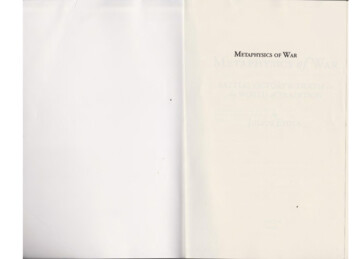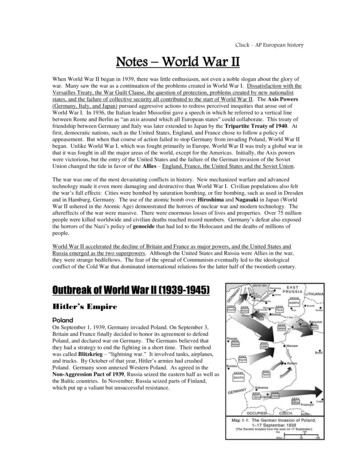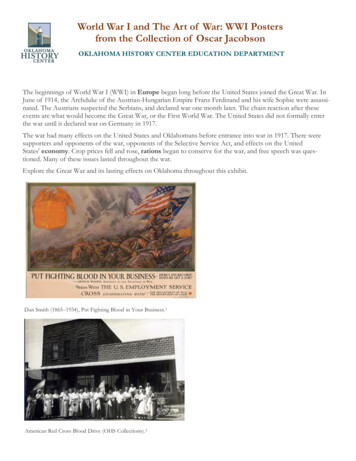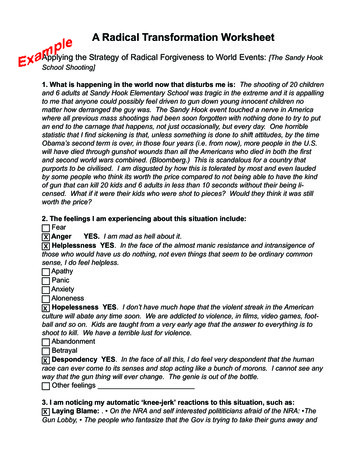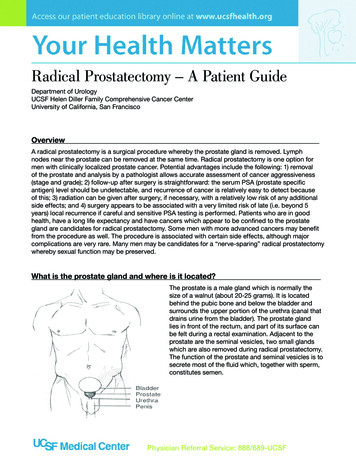
Transcription
Somalia at War – Between Radical Islam and Tribal PoliticsTable of ContentsList of Mapspage 2Introductionpage 3Historical Backgroundpage 4The Eruption of the Somali Civil War and the US and UN Intervention (1991 – 1995)page 23Division of Somalia and the Emergence of the Somali Islamist Emirate Visionpage 31Somalia as a Battleground between Al-Qa'ida US Counter Terrorismpage 36The Rise of the Islamic Courts Union to Power and Its Struggle with the TFG over theControl of Somaliapage 43The Mogadishu Insurgency and Reconciliation Effortspage 58Conclusionpage 69Referencespage 72
List of MapsMap 1: Somalia and the Horn of Africapage 4Map 2: Somali Ethnic Groups and its Distributionpage 7Map 3: Eritrean-Ethiopia border war (1998 – 2000)page 49Map 4: ICU expansion in Somaliapage 53Map 5: The December 2006's Somali Civil Warpage 56
IntroductionDuring the last decade or so, but especially during the last year and a half, Somaliahas become one of the main battlefields in the US global "war on terror", togetherwith Afghanistan and Iraq. The situation has been further complicated by a chaoticsituation prevailing in the country, caused by sixteen long and devastating years ofcivil war between various Somali clans and sub-clans, while the rival regional powers– Ethiopia and Eritrea – have tended to take different sides and aid rival clans andsub-clans fighting against each other. Thus, the Somali civil war has developed into aregional and global conflict, which involves many other players, other that thosementioned above, including: al-Qa'ida, Yemen, Sudan, Egypt, IGAD, the AfricanUnion, the Arab League, and the UN.Throughout its history, Somalia has witnessed a lot of local conflicts between rivalclans and sub-clans as well as some major regional conflicts with Ethiopia. Thecommon characteristic of all those major conflicts has been its development intoregional conflicts between Ethiopia and the Arab world, while some of them haveeven developed into religious and global conflicts between Christians and Muslims.Yet, this current Somali conflict is different from all past Somali conflicts in thenumbers of regional, continental, and global players involved; the unprecedentedactive involvement of foreign players in Somali local affairs; and the immediate local,regional, and global circumstances at hand as well as the most important role radicalIslam has played in the conflict.So, the aim of this research is to explain how the immediate local, regional, and globalcircumstances at hand have made Somalia currently one of the main battlefieldbetween regional powers and between the US and al-Qa'ida. Thus, this research willanalyze the social and historical roots of the current conflict, the course of theconflict, the role of radical Islam in the conflict; and the intervention of externalregional and global players in the conflict and its motives.The question asked in this context is: what has contributed to the development ofSomalia again and again throughout its history into a major regional and globalbattlefield?Another aim of this research is to explore the relationship between tribalism or tribalidentity and Islam in Somalia. Has the religion of Islam succeeded to be a unifyingforce transcending clan lines throughout Somalia history? Or, has it served only as atool in a certain point in history to unify the various Somali clans against a foreignChristian aggressor, and when the danger passed, the Somalis splintered back intotheir various tribes?One of the most important local circumstances that must always be taken into accountwhile trying to understand the causes for the emergence of Somali local, regional andglobal conflicts throughout history is the geography of Somalia and its strategiclocation.
Historical BackgroundSomalia, officially the Somali Republic and formerly known as the SomaliDemocratic Republic, is located on the east coast of Africa between the Gulf of 'Adenon the north and the Indian Ocean on the east and has the longest coastline in Africa.Together with Ethiopia, Eritrea, and Djibouti it is often referred to as the Horn ofAfrica because of its resemblance on the map to a rhinoceros's horn. It is bordered byDjibouti on the northwest, Kenya on its southwest, the Gulf of 'Aden with Yemen onits north, the Indian Ocean on its East and Ethiopia on the west.
Map 1: Somalia and the Horn of AfricaDue to its strategic location in one of the world's main maritime arteries and traderoutes, connecting the Middle East and Europe with the Far East, and its location onthe shores of the Gulf of 'Aden and the Indian Ocean, just across the Gulf of 'Adenfrom the Arabian Peninsula, Ethiopia and the Arab world struggled over expandingtheir influence zones over Somalia. For Ethiopia, which has always striven for anoutlet to the sea and to world commerce, spreading its control and influence intoSomalia has been vital, while the for the Arabs from the Arabian Peninsula and Egypt,Somalia served as the gate for the proliferation of Islam and Arab influence into therest of Africa, especially East Africa. Thus, there is no wonder that Somalia hasdeveloped from the Middle Ages onwards into a battlefield between the Arab worldand Ethiopia as well as between Christianity and Islam and, nowadays, due to thesame strategic considerations, Somalia has developed into a battlefield between theUS and al-Qa'ida.Somalia is Africa's easternmost country and occupies the tip of the Horn of Africa. Ithas a land area of 637,450 square kilometers, slightly less than that of the state ofTexas. Its terrain consists mainly of plateaus, plains, and highlands. The weather ishot throughout the year, except at the higher elevations in the north. Rainfall is sparse,and most of Somalia has a semiarid-to-arid environment suitable only for the nomadicpastoralism practiced by well over half of the population. Only in limited areas ofmoderate rainfall in the northwest, and particularly in the southwest, where thecountry's two perennial rivers, the Jubba and the Shabeelle are found, is agriculturepracticed to any extent. Favorable rainfall and soil conditions make the entire riverineregion a fertile agricultural area and the center of the country's largest sedentarypopulation. Furthermore, Somalia's local geology suggests the presence of valuablemineral deposits and oil.Thus, climate is the primary factor in much of Somali life. For the large nomadicpopulation, the timing and amount of rainfall are crucial determinants of the adequacyof grazing and the prospects of relative prosperity. There are some indications that theclimate has become drier in the last century and that the increase in the number ofpeople and animals has put a growing burden on water and vegetation.This brings me to discuss the second most important local circumstance that must bealways taken into account while trying to understand the causes for the emergence ofSomali local and regional conflicts throughout history, which is Somali tribal society.According to an official census taken in 1975 by the Somali government, Somalia hasa population of approximately 9,118,773, though according to UN estimates in 2003,it has a population of around 10,700,000, 85% of which constitute ethnic Somalis,while the other 15% constitute Bantu and non-Somali inhabitants, including 30,000Arabs. It should be mentioned that population counting in Somalia is complicated bythe large number of nomads and by refugee movements caused often by famine andclan warfare.The Somalis are an ethnic group located in the Horn of Africa. The overwhelmingmajority of Somalis speak the Somali language, which is part of the Cushitic subgroup of the Afro-Asiatic language family. Ethnic Somalis number around 20-25
million and are principally concentrated in Somalia (over 9 million), Ethiopia (4-5million), northeastern Kenya (up to 1 million and even more than that during times ofcrisis in Somalia due to migration), Djibouti (350,000), and over a million living innon-East African countries and parts of the Middle east, North America, and Europedue to the Somali civil war.Somalis are split up into many clans and sub-clans. The clan is the most importantsocial unit in Somalia and, thus, clan membership continues to play an important partin Somali culture and politics. Clans are patrilineal and are often divided into subclans, sometimes with many sub-divisions. The number and size of sub-clans within aclan varied; the average sub-clan in the twentieth century numbered about 100,000people.Certain clans are traditionally classed as "noble clans", referring to the belief that theyshare a common Somali ancestry, whereas the minority clans are believed to havemixed parentage. The noble clans are believed to be descended from Samaale, and aresometimes referred to collectively by this name. The four noble clans are Darod, Dir,Hawiye, and Isaaq. Sab is the term used to refer to minority clans in contrast toSamaale.The Hawiye members live in central and southern Somalia, in larger numbers inKenya and Ethiopia, and in smaller numbers in other countries. As of 2007, theHawiye is the most dominant clan in the Somali capital, Mogadishu. The Darod is thelargest Somali clan and its members live throughout northeastern, southwesternSomalia and the Jubba River Valley as well as in northern Kenya and in Ogaden. TheIsaaq members live mainly in Somaliland and the Somali region in Ethiopia. The Dirmembers live mostly in northern Somalia, central Somalia (Mudug), southernSomalia, as well as in Ethiopia's Somali region and in Djibouti.
Map 2: Somali Ethnic Groups and its DistributionThe Rahanweyn is a Somali clan, composed of two major sub-clans, the Digil and theMirifle. The Digil sub-clan consists mainly of farmers and coastal people, while theMirifle consists mainly of nomadic pastoralists. They are concentrated mainly in thearea between the Jubba and the Shabeelle rivers as well as in Mogadishu. They arealso found in neighboring Kenya and Ethiopia, but not in Djibouti. They occupy akind of second tier in the Somali social system. They do not follow a nomadiclifestyle, live further south and speak a group of Somali dialects (Af-Maay) whichhave recently been classified as a separate language and so they have been isolated tosome extent from the mainstream of Somali society.A third tier within Somali society includes several thousand persons, including someethnic Somalis, who are integrated into traditional society but are not included withinthe five major clans. Among them there are Somali clans descended from ancestorspredating or otherwise missing from the genealogies of the five major clans. Othersare lineages of relatively unmixed Arab or Persian descent, whose members used tolive in the coastal towns. Such lineages or communities have varying relationshipswith local Somalis. Some are clients subordinate to Somali groups, while others areindependent entities in the larger towns. A second category consists of the so-called
Habash, or Adoon, cultivators or hunters of pre-Somali origin who live among theRahanweyn and Digil in the inter-riverine areas. A third category consists ofoccupationally specialized caste-like groups, members of which are attached toSomali lineages or clans. These occupational groups have sometimes been treated asoutcastes, because traditionally they can only marry among themselves and otherSomalis consider them to be ritually unclean. They live in their own settlements andperform specialized occupations, such as metalworking, tanning and hunting. Theseclans include the Midgan, Tumal, and Yibir. Finally, until the last were freed in the1920s, there were a small number of slaves attached to both pastoral and sedentarySomali groups, who were of greater economic importance among the latter. Otherminority clans include the Eyle, who live in the southwest, the Jaji and the Yahar.The Somalis are a culturally, linguistically, and religiously homogeneous people (99%of the overall population are Sunni Muslims, while the remainder one percent areChristians), who are divided along clan lines. Moreover, there are significantdistinctions among sectors of the population, related in part to variations in means oflivelihood. In the early 1990s, roughly 60% of the overall population was stillnomadic pastoralists or semi-nomadic herders. Twenty to 25 percent of the populationwas cultivators, most living in the southwestern part of Somalia, on or betweenSomalia's two major rivers, the Jubba and the Shabeelle. The remainder was townresidents, the vast majority of them resided in Mogadishu. However, with the fall ofGeneral Muhammad Siad Barre's regime on January 27, 1991, and the ensuing civilwar that resulted in the disintegration of the Somali state, patterns of residencychanged dramatically and Mogadishu has been overcrowded since then withthousands of refugees flocking to it from all over the country.The Somalis segment themselves into a hierarchical system of patrilineal descentgroups, each said to originate with a single male ancestor. Their constituent units arethe clans, which in turn are made up of lineages, which themselves are furthersegmented. Among the sedentary Somalis, however, descent gives way in part toterritoriality as a framework for social, political, and economic organization.Membership in clans and lineages shapes the allocation of individual rights andobligations. Contracts or treaties bound specified descent groups and their individualmembers together for the making of war and peace and, above all, for the provision ofcompensation in cases of homicide and injury.The overwhelming majority of Somalis trace their genealogical origin to the mythicalfounding father, Samaale or Samaal. Even those clans, such as the Digil and theRahanweyn in southwestern Somalia, whose members in many cases do not tracetheir lineage directly to Samaal, readily identify themselves as Somalis, therebyaccepting the primacy of Samaal as the forebear of the Somali people. Thus,genealogy constitutes the heart of the Somali social order. It is the basis of thecollective Somali nationalism as well as of the Somalis' sense of being distinct.The Somali social order has been marked throughout Somalia's history by competitionand often by armed conflict between clans and lineages, even between units of thesame clan or sub-clan. Among the Samaal, the search for pasture and water has drivenclans and lineages physically apart or pitted them against each other. Within eachunit, Somali males considered better warriors, wiser arbiters, or abler speakers havecommanded greater respect in council. However, pastoral Somalis have looked down
on sedentary ones, and both have looked down on non-Somali clients of the sedentarySomalis and members of despised occupational groups, who have made up only avery small proportion of the population.Located in the Horn of Africa, adjacent to the Arabian Peninsula, Somalia is steepedin thousands of years of history. The ancient Egyptians spoke of it as "God's Land"(the Land of Punt). Chinese merchants frequented the Somali coast in the fourteenthand fifteenth centuries and, according to tradition, returned home with giraffes,leopards, and tortoises. Greek and Roman merchant ships and Arab dhows plied theSomali coast. For them it formed the eastern fringe of Bilad al-Sudan, or "the Land ofthe Blacks". More specifically, medieval Arabs referred to the Somalis, along withrelated people, as the Berberi.Still, it is unclear from this Arab reference who are the Somali people and where theyoriginated from. Due to a lack of written evidence of the early history of the Samaal,numerous historical perspectives on their origins have been presented. According toArab historical sources, the ancestors of the Somali people migrated south from theshores of the red sea into the Cushitic-speaking Oromo region from approximately thetenth century, with the Oromos displacing the Bantu-speaking people further south.According to another source based on northern oral history, the Somali are a hybridgroup originating in the marriages of two Arab shaikhs to local Dir women, whosedescendants migrated from the Gulf of 'Aden towards Northern Kenya in the tenthcentury.Based on a hybrid of archaeological, anthropological and historical linguisticevidence, it is now widely asserted that the Samaal originated in the lake regions ofcurrent day southern Ethiopia, Kenya, and Uganda, as sub-group of the Cushiticpeoples. In the first millennium BC, it is believed that the sub-group known as OmoTana moved northwards from the lake highland areas until reaching the Tana Riverand the Indian Ocean. Some settled along the Lamu peninsula, situated near thenorthern Kenya and southern Somalia border, while others continued to movenorthwards into southern Somalia. There the group's members eventually developed amixed economy based on farming and animal husbandry, a mode of life still commonin southern Somalia. Members of the Omo-Tana group who came to occupy theSomali Peninsula were known as the so-called Samaale, or Samaal, a clear referenceto the mythical father figure of the main Somali clans, whose name gave rise to theterm Somali. The Samaale again moved farther north in search of water andpasturelands. They swept into the vast Ogaden (Ogaadeen) plains, reaching thesouthern shore of the Red Sea by the first century A.D.The expansion into the Somali peninsula as far as the Red Sea and Indian Ocean putthe Somalis in sustained contact with Persian and Arab immigrants who hadestablished a series of settlements along the coast. From the eighth to the tenthcenturies, Persian and Arab traders were already engaged in lucrative commerce fromenclaves along the Red Sea and Indian Ocean as far south as the coast of present-dayKenya. The most significant enclave was the renowned medieval emporium of Saylacon the Gulf of 'Aden. In the sixteenth century, Saylac became the principal outlet fortrade in coffee, gold, ostrich feathers, civet, and Ethiopian slaves bound for theMiddle East, China, and India. Over time Saylac emerged as the center of Muslimculture and learning, famed for its schools and mosques. Eventually, it became the
capital of the medieval state of Adal, which in the sixteenth century fought offChristian Ethiopian domination of the highlands. Between 1560 and 1660, Ethiopianexpeditions repeatedly harried Saylac, which sank into decay. Berbera replacedSaylac as the northern hub of Islamic influence in the Horn of Africa. By the middleof the sixteenth century, both Saylac and Berbera had become dependencies of theSharifs of Mocha and in the seventeenth century passed to the Ottoman Turks, whoexercised authority over them through locally recruited Somali governors.The history of commercial and intellectual contact between the inhabitants of theArabian and Somali coasts may help explain the Somali connection with Islam. Earlyin the Prophet Muhammad's ministry, a band of persecuted Muslims had, with theProphet's encouragement, fled across the Red Sea into the Horn of Africa. There theMuslims were afforded protection by the Ethiopian negus, or emperor. Thus, Islammay have been introduced into the Horn of Africa well before the faith took root in itsArabian native soil. Yet, the large-scale conversion of the Somalis had to await thearrival in the eleventh, twelfth, and thirteenth centuries of Muslim Sufi shaikhs, inparticular, the renowned shaikh Daarood Jabarti and Shaikh Isahaaq, or Isaaq.Daarood married Doombira Dir, the daughter of a local senior. Their marriage gaverise to the confederacy that forms one of the two largest clans in Somalia, the Darod.For his part, shaikh Isaaq founded the Isaaq clan in northern Somalia. Along with theclan system of lineages, the Arabian Sufi shaikhs probably introduced into Somaliathe patriarchal ethos and patrilineal genealogy, and gradually replaced the indigenousSomali social organization, which, like that of many other African societies, may havebeen matrilineal.Islam's penetration of the Somali coast, along with the immigration of Arabianelements, inspired a second great population movement reversing the flow ofmigration from north to south. This massive movement, which ultimately took theSomalis to the banks of the Tana River and to the fertile plains of Harar, in Ethiopia,began in the thirteenth century and continued to the nineteenth century.In addition to southward migration, a second factor in Somali history from thefifteenth century onward was the emergence of centralized state systems. The mostimportant of these in medieval times was the Sultanate of Adal, whose influence atthe height of its power and prosperity in the sixteenth century extended from Saylac,the capital, through the fertile valleys of the Jijiga and the Harar plateau to theEthiopian highlands. The Sultanate of Adal's fame derived not only from theprosperity and cosmopolitanism of its people, its architectural sophistication, gracefulmosques, and high learning, but also from its conflicts with the expansionistEthiopians.For hundreds of years before the fifteenth century, good relations had existed betweenthe Muslims and Christian Ethiopia. One tradition holds that Prophet Muhammadblessed Ethiopia and enjoined his disciples from ever conducting Jihad (holy war)against the Christian kingdom in gratitude for the protection early Muslims hadreceived from the Ethiopian emperor. Whereas Muslim armies rapidly overran themore powerful empires of Persia and Byzantium soon after the birth of Islam, therewas no Jihad conducted against Christian Ethiopia for centuries.
However, Muslim-Christian relations soured during the reign of the aggressiveEmperor Yeshaq (ruled 1414-29). Forces of his rapidly expanding empire descendedfrom the highlands to attack Muslim settlements to the east of the ancient city ofHarar. Having branded the Muslims "enemies of the Lord," Yeshaq invaded theMuslim Kingdom of Ifat in 1415, killed its king, Sa'ad al-Din compelled the Muslimsto offer tribute, and also ordered his singers to compose a hymn of thanksgiving forhis victory. In the hymn's lyrics, the word Somali appears for the first time in writtenrecord.By the sixteenth century, the Sultanate of Adal was tributary to the Ethiopians. Bythen, the Muslims had recovered sufficiently to break through from the east into thecentral Ethiopian highlands. Led by Ahmad ibn Ibrahim al-Ghazi (1506-43),nicknamed Gragn, or Guray in Somali (the left handed), the Muslims poured intoEthiopia, using scorched-earth tactics that decimated the population of the countryand brought three-quarters of Ethiopia under the power of the Sultanate of Adalbetween the years 1529 – 1543. In desperation, the Ethiopians were forced to ask forhelp from the Portuguese, who landed at the port of Massawa on February 10, 1541,during the reign of the emperor Gelawdewos (1540 – 1559). Knowing that victorydepended on the number of firearms an army had, the Imam sent to his fellowMuslims for help. Imam Ahmad received 2000 musketeers from Arabia, and artilleryand 900 picked men from the Ottomans to assist him. Finally, after suffering somedefeats, the joint Ethiopian-Portuguese force, drawing on the Portuguese supplies,attacked Imam Ahmad on February 21, 1543 in the Battle of Wayna Daga, wheretheir 9,000 troops managed to defeat the 15,000 soldiers under Imam Ahmad, whowas killed by a Portuguese musketeer.This was the first conflict in the Horn of Africa that pitted Somalia and the Arabworld against Ethiopia and Muslims against Christians. Ethiopia, which in that periodwas an island of Christianity encircled by Muslims, had no choice but to ask for helpfrom the closest Christians at hand, the Portuguese. By then, the Portuguese ruled theIndian Ocean littoral and tried to dominate the Red Sea. Imam Ahmad, however,asked for the Ottomans' help. Then, the Ottomans ruled the Red Sea and struggledwith the Portuguese over the domination over the Indian Ocean and tried to preventthe penetration of the Portuguese into the Red Sea.Thus, this regional war turned out to be another battlefield between the Ottomans who in the sixteenth century advanced in Europe until Vienna and struggled with thePortuguese on the hegemony over the Red Sea and the Indian Ocean and seemed to beunstoppable – and the Christian powers, who tried to block its rapid advance, and, inthis case, to prevent the fall of Christian Ethiopia to the Muslims' hands.In this sense, this conflict serves to illustrate the strategic location of Somalia and theHorn of Africa and its growing importance in global affairs as from the sixteenthcentury onwards following the expansionist policy of Ethiopia towards the sea and thearrival of the European powers at the Indian Ocean. Moreover, it must be mentionedthat many modern Somali nationalists consider Imam Ahmad Guray a national heroand the first great Somali nationalist, who emerged on the scene just on time in orderto defend the country from foreign invaders like the Christian Ethiopians and thePortuguese.
Later on, during the eighteenth and nineteenth centuries, Omanis exercised a shadowyauthority over the Banaadir coast. Omani rule over the Somalis consisted for the mostpart of a token annual tribute payment and the presence of a resident qadi and ahandful of askaris (territorial police). Whereas the Banaadir coast was steadily drawninto the orbit of Zanzibari rulers, the northern coast, starting in the middle of theeighteenth century, passed under the sharifs of Mocha, who held their feeble authorityon behalf of the declining Ottomans. The Mocha sharifs, much like the sultans ofZanzibar, satisfied themselves with a token yearly tribute collected for them by anative governor. Farther east on the Majeerteen (Bari) coast, by the middle of thenineteenth century two tiny kingdoms emerged. These were the Majeerteen Sultanateof Boqor Ismaan Mahmud, and that of his kinsman Sultan Yusuf Ali Keenadiid ofHobyo (Obbia). While acknowledging a vague vassalage to the British, IsmaanMahamuud kept his desert kingdom free until well after 1900. In the 1870s,Keenadiid carved out the small kingdom of Hobyo after conquering the local Hawiyeclans. Both kingdoms, however, were gradually absorbed by the extension intosouthern Somalia of Italian colonial rule in the last quarter of the nineteenth century.The last quarter of the nineteenth century saw political developments that transformedthe Somali Peninsula. During this period, the Somalis became the subjects of statesystems under the flags of Britain, France, Italy, Egypt, and Ethiopia. The new rulershad various motives for colonization.Britain sought to gain control of the northern Somali coast as a source of mutton andother livestock products for its naval port of 'Aden in present-day Yemen. As a resultof the growing importance of the Red Sea to British operations in the East, 'Aden wasregarded as indispensable to the defense of British India. British occupation of thenorthern Somali coast began in earnest in February 1884, when Major A. Hunterarrived at Berbera to negotiate treaties of friendship and protection with numerousSomali clans. Hunter arranged to have British vice consuls installed in Berbera,Bullaxaar, and Saylac.The French, having been evicted from Egypt by the British, wished to establish acoaling station on the Red Sea coast to strengthen naval links with their Indochinacolonies. The French were also eager to bisect Britain's vaunted Cairo to Cape Townzone of influence with an east to west expansion across Africa. France extended itsfoothold on the Afar coast partly to counter the high duties that the British authoritiesimposed on French goods in Obock. A French protectorate was proclaimed under thegovernorship of L י once Lagarde, who played a prominent role in extending Frenchinfluence into the Horn of Africa.Recently unified, Italy was inexperienced at imperial power plays. It was thereforecontent to stake out a territory whenever it could do so without confronting anothercolonial power. In southern Somalia, better known as the Banaadir coast, Italy was themain colonizer, but the extension of Italian influence was painstakingly slow owing toparliamentary lack of enthusiasm for overseas territory. Italy acquired its firstpossession in southern Somalia in 1888 when the Sultan of Hobyo, Keenadiid, agreedto Italian "protection." In the same year, Vincenzo Filonardi, Italy's architect ofimperialism in southern Somalia, demanded a similar arrangement from theMajeerteen Sultanate of Ismaan Mahamuud. In 1889 both sultans, suspicious of eachother, consented to place their lands under Italian protection. Italy then notified the
signatory powers of the Berlin West Africa Conference of 1884-85 of its southeasternSomali protectorate. Later, Italy seized the Banaadir coast proper, which had longbeen under the tenuous authority of the Zanzibaris, to form the colony of ItalianSomaliland. Chisimayu Region, which passed to the British as a result of theirprotectorate over the Zanzibaris, was ceded to Italy in 1925 to complete Italian tenureover southern Somalia.What the European colonialists failed to foresee was that the biggest threat to theirimperial ambitions in the Horn of Africa would come from an emerging regionalpower, the Ethiopia of Emperor Menelik II (1889 – 1909). Emperor Menelik II notonly managed to defend Ethiopia against European encroachment, but also succeededin competing with the Europeans for the Somali-inhabited territories that he claimedas part of Ethiopia. Between 1887 and 1897, Menelik II successfully extendedEthiopian rule over the long independent Muslim Emirate of Harar and over westernSomalia (better known as the Ogaden).Thus, by the turn of the nineteenth century, the ethnic Somalis were divided betweenBritish Somaliland, French Somaliland, Italian Somaliland, Ethiopian Somaliland (theOgaden), and what came to be called the Northern Frontier District (
Somali local and regional conflicts throughout history, which is Somali tribal society. According to an official census taken in 1975 by the Somali government, Somalia has a population of approximately 9,118,773, though according to UN estimates in 2003, it has a population of around 10,700,000, 85% of which constitute ethnic Somalis,

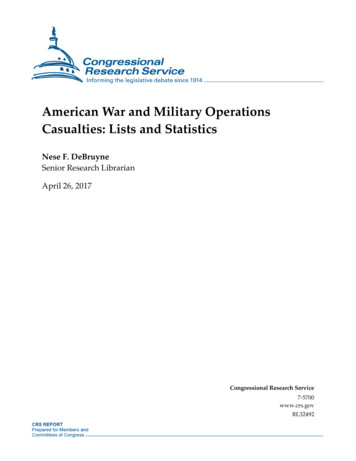
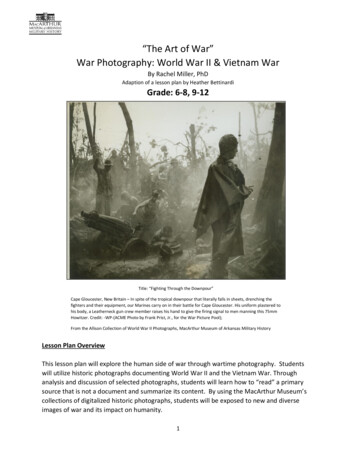
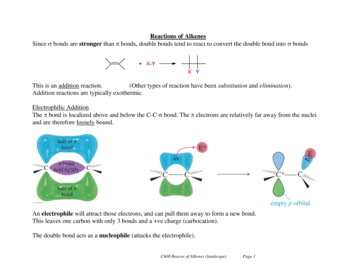
![Radical Healing Syllabus[4] - School of Social Work](/img/36/radical-healing-syllabus-2.jpg)

